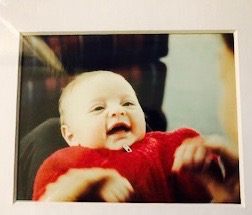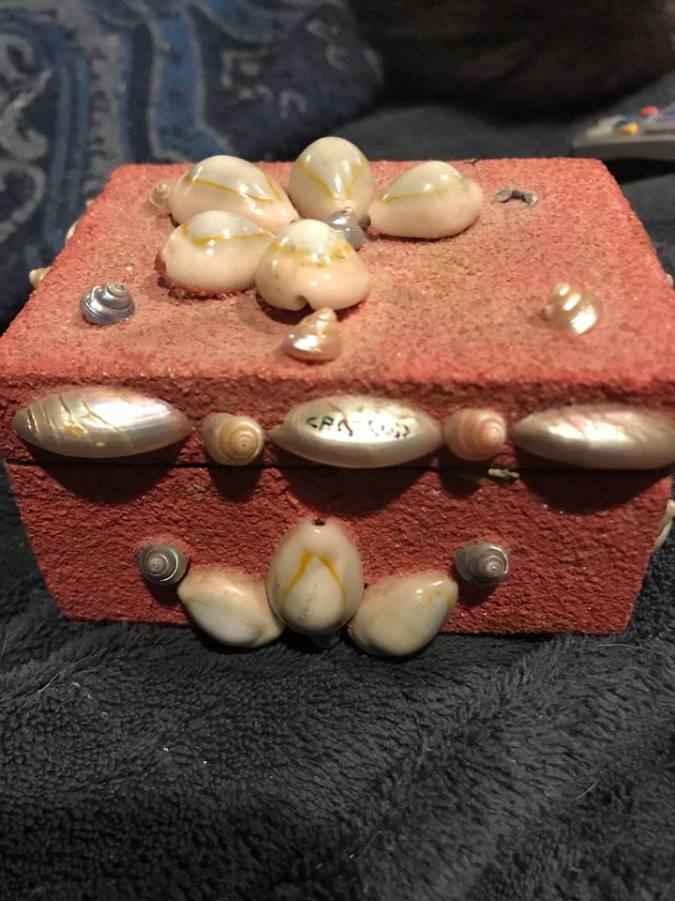
Our interest in creating photo holiday cards usually coincides with the arrival of the first baby. Here’s our son at 3 months old.
Like many folks, I dropped the ball sending out Christmas cards last year.
I wasn’t happy about it, but something had to give and it was cards to my friends and family. I simply didn’t have or make time for the annual tradition.
But I threw together a card at the last-minute this year, and am still in the process of getting them in the mail. Years ago, I’d have chastised myself and anyone else who didn’t send their cards before Christmas, but I’m a little more forgiving these days. Cutting people a little slack is one of the perks of getting a little older and wiser.
Most of all, I’m eternally grateful that everyone kept me on their Christmas card mailing list despite my sluggishness last year. In a different time, I’d have been deleted immediately for failing to keep up my end of the bargain.
But I did sense some annoyance. One of my oldest friends who usually scribbles a few words sent a card without so much as her signature. I think it’s her way of telling me to get my act together. In truth, assembling and getting cards out in the mail is not that big a deal. It’s certainly a lot better than feeling like a chump or slacker when you receive cards and don’t send anything in return, as I did last year.
I understand why cards fall through the cracks during the hectic holiday season, but I’m heartened by the number of people who still honor the tradition. It’s one of the few times of the year that my mailbox is stuffed with personal mail and it’s fun opening picture cards and seeing how kids have grown.
One of my sister Joanne’s greatest laments of empty-nesting was sending out a Christmas card without a photo of her three children, but we all get there eventually. “I’m now one of those people sending out a card that no one will really care about,” she said, or something like that. I’m not sure that’s true, but I get it.
We all love pictures, particularly of our friends and family featuring their children and pets. And here’s a little confession: I never throw out a photo Christmas card. I keep them in boxes in my pantry and my closet because they’re too precious to toss. They capture a moment in time, a tangible wish for love and good tidings from one family to another in this very crazy world. I guess I want to cling to the cards and what they represent forever.
My Christmas card photos began in December, 1997, when my son was three months old. I dressed him in a fuzzy red onesie and drove to Joanne’s house for a photo shoot. As I balanced him on my knees and held his hands, Joanne trained her 35 mm camera on my little man, but he refused to cooperate. He fussed and wouldn’t crack a smile.
“He looks so unhappy,” I lamented. “I can’t send out a photo of him looking so miserable. People will think I’m a terrible mother and that he doesn’t like me.”
He finally cooperated, managing a gummy grin befitting a Christmas card and official introduction to my family and friends. But it marked my uneasy introduction into the world of Christmas card photos. I realized it’s not easy to get a great shot, particularly when dealing with tiny children who have a mind of their own.

This year’s card was a no-brainer: a shot from trip to London for a nephew’s wedding.
I thought things would be easier the next year when he was 15 months old. I snapped about 500 photos of him at a herb farm called Catnip Acres to capture his cuteness and personality, but I still wasn’t satisfied. I ended up sending out two different cards, one capturing his profile and another head-on. (Hey, if they occasionally produce two different magazine covers for Esquire and People, why not my Christmas card?)
My quest for the perfect card continued with the arrival of my daughter in 2001, and I learned the first lesson of parental photo taking: it’s impossible to get a great shot of both kids. If one was smiling, the other’s eyes were closed, and visa versa. Forget about adding the dog to the mix. I usually just ended up with her tail as she darted from the photo.
As a parent, it’s such a relief to get a decent Christmas card early in the year. A few years, I used photos from our annual summer vacation in Martha’s Vineyard for the card. So what if the kids’ hair was soaking wet from the surf? They looked happy and relaxed and the background of the meadow was fantastic. Best of all, I had my card photo. Whew!
Weddings are also a great time to capture Christmas card photos. Everyone is happy and dressed up, and there’s usually a relative or friend around willing to take the photo. As much as I enjoy some selfies – who am I kidding, I really can’t stand them – it’s wonderful to see photos that don’t involve seeing someone’s telltale sleeve or arm in the corner.
There is also the nearly forgotten self-timer option. For years, I was in charge of manning the camera for my mother-in-law’s annual Christmas card photo on the beach. I took enormous pride in perfecting the art of dashing from the camera to the assembled family while the camera flashed and beeped. This was before digital cameras, so I had to do it at least 10 times to ensure we got a decent shot.
One year, my mother-in-law hired a professional photographer for the shoot. But everyone was so stressed out by the experience – why is he wearing that wrinkled shirt? Why didn’t she comb her kids’ hair? Is that really what you plan to wear for the photo? – that by the next year we were back on the beach with the self-timer. We continued the tradition until my mother-in-law’s final summer in 2003.
It was important for my mother-in-law to show her family together, even if was just for 24 hours. Her children were scattered around the globe, so getting us together was no easy task. One year, we couldn’t pull it off and had to photo shop my brother-in-law David into the shot.
Of course, there’s a lot less pressure for the perfect shot with today’s wide assortment of cards, which feature collages for multiple photos and even spaces on the back for extra photos. But as in most things in life, sometimes less is more. I tried to insert at least two photos of my children onto the back of my card this year, and was scolded by Shutterfly for using photos with poor resolution.
I finally decided to leave to space blank because every photo I chose was poor quality. When my son asked why I was leaving it blank, I said, “I can continue to try to find a decent photo or I can check out and get these in the mail sometime before the new year. I’m going with the second option.”

We have Annie Oakley to thank for our long and storied history with personalized Christmas cards. (Photo courtesy of Bing.com)
Christmas cards began in 1843 in London. The first known personalized Christmas card was sent in 1891 by Annie Oakley, the famous sharpshooter and star of Buffalo Bill’s Wild West show. She was in Glasgow, Scotland at Christmas 1891, and sent cards back to her friends and family in the United States featuring a photo of her on it. She was in Scotland, so she’s wearing tartan in the photo. Annie reportedly designed the cards herself and they were made by a local printer.
In keeping with Annie’s travel theme, I used a family photo from a trip to London last July for my nephew’s wedding for this year’s card. My sister-in-law Ann took the shot as we stood outside the church in 95-degree heat and sipped champagne after the late afternoon ceremony. I guess I’m most stunned that all of us look decent despite the fact that we were sweating profusely. Perhaps that it why we all appear to be glowing.
I converted the shot to black and white to give it a vintage feel. I chose a black and gold card frame because the photo was too big for all of the other cards. It worked out well, but it wasn’t studied or planned. Our gigantic heads were just wouldn’t fit into most of the other cards.
I still have about 20 cards to get in the mail, and hope they’ll arrive by New Year’s Day. It’s not perfect, not by a long shot, but it’s the best I can do. Sometimes – no often – that’s enough. I hope everyone is having a wonderful holiday season. Thanks for your love and support, and . . .
HAPPY NEW YEAR!!!



















